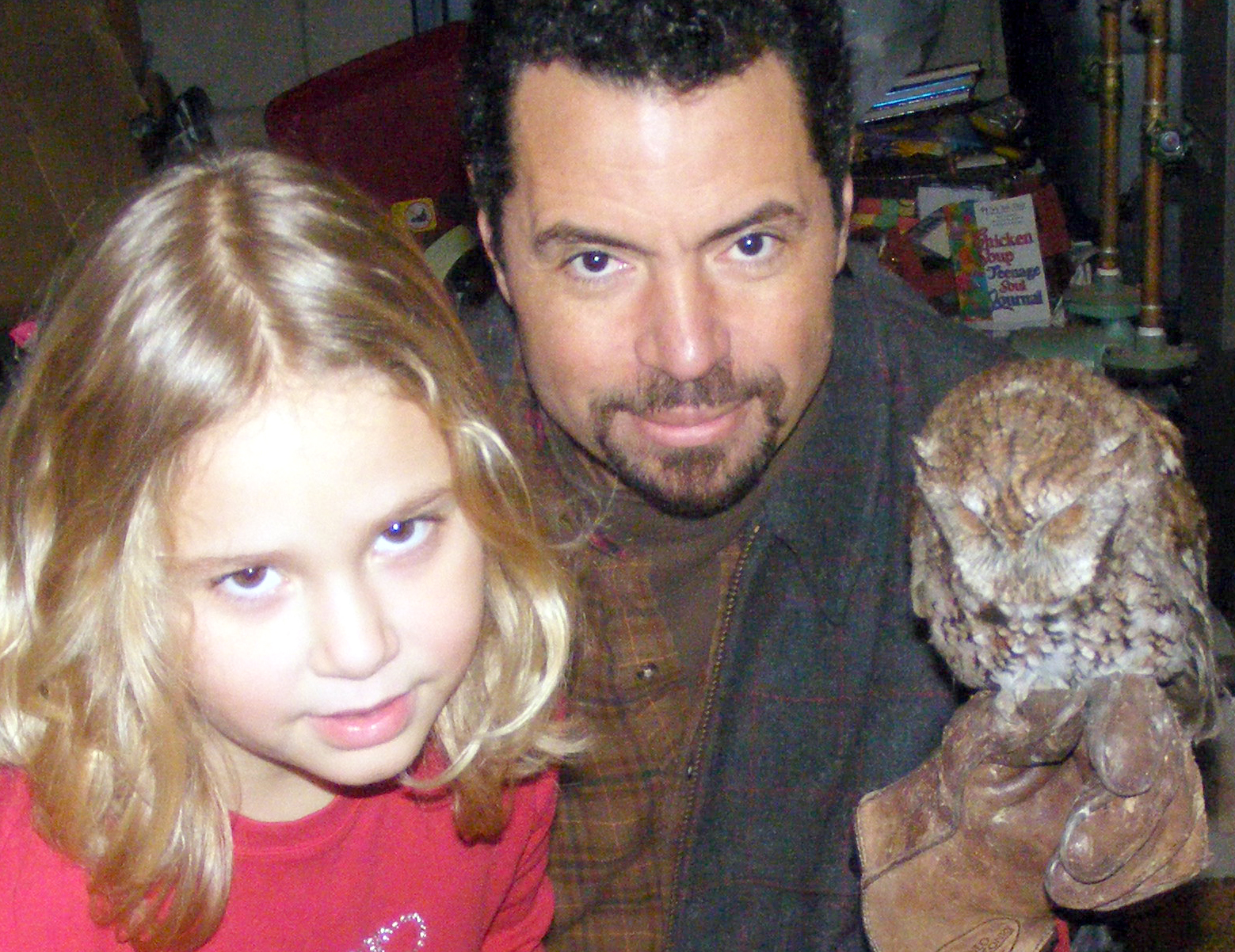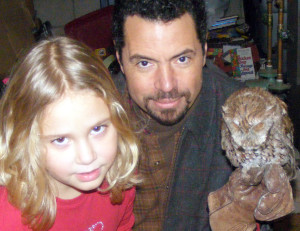Late night brush with nature: Whooo flew down the flue?
Any unexpected noise at 2:30 in the morning can be hard to ignore.
Especially if that noise is something scratching inside a metal stove pipe between your own oil furnace and the chimney leading outside.
I had just got home from a late night of work, and was getting clothes out of the dryer before hitting the shower when I heard it. Something was scurrying up and down the thick metal exhaust stack. When I noticed the damper door start to move, meaning that the unseen critter was trying to escape the piping into the house, I sprung into action.
While attempting to hold the damper closed with a metal fireplace poker, I started brainstorming what could be scurrying around in the pipe. A mouse? A rat? A squirrel? When an inch-long claw slipped out of the damper door I was trying to hold — I realized this was no squirrel. Lucky for it, we have been using our woodstove while giving the oil furnace a break.
The next morning, after deciding that pest removal services were obviously not made for those on a journalist’s salary, it was time to tackle the project personally. Armed with a flashlight, Leatherman, canvas leafblower bag, duct tape and the trusty fireplace poker, my wife and I took apart the galvanized exhaust pipe and finally found the culprit.
A screech owl.
I was expecting to see an oppossum or small raccoon. I was also ready to take any means necessary to eliminate the pest problem. But this was an owl. She and her feathered cousins helped keep the vermin population under control at la casa de Zaktansky. I just couldn’t bring myself to poke her with the poker.
So I called in reinforcements. Mike Dupuy, the falconer and birds of prey expert from the suburbs of Penns Creek, to be exact.
And despite an impending snow storm that night and an ice-covered driveway he was trying to tackle, Mr. Dupuy dropped everything and came to the rescue. He removed the 5.1-ounce (not even a third of a pound) female screech owl and planned to take her back to his spread for medical attention. But he didn’t stop there. He took the time to talk with my wife and 6-year-old daughter about owls. He let my daughter pet the owl. He took pictures and videos and even played the screech owl’s signature horse-whinny-like call from off his iPhone so my daughter knew what they sounded like.
It was apparent that Mr. Dupuy wasn’t just an animal rescuer, but also a people educator.
An owl encyclopedia
On Saturday, during a nearly hour-long phone conversation with me about our rescued owl friend, Dupuy rattled off more information about owls, hawks and other birds of prey than one could cram into a whole encyclopedia of Peterson Field Guides.
For example, the Eastern Screech Owl is the third smallest owl known, just bigger than the pygmy and saw-whet owls. Female screech owls are typically bigger than males, which is how Dupuy determined our flue-flyer was a she. The screech owl is in the same family as the great horned owl, but different than the barn owl. Typically, the screech owl is a gentle bird, trying so hard to blend into its enviroment, such as a tree limb, that people have been known to walk right up to them in the wild.
Screech owls are also cavity dwellers — they typically nest in dead trees. This is why Dupuy strongly suggests that if you harvest a lot of firewood on your property, it is a good idea to install a few screech owl nesting boxes about 12 to 15 feet off the ground so the owls have an alternative when their typical homes are chopped down.
Screech owls eat an abundance of small animals, such as mice, rats and squirrels. During the warmer months, they have been known to chow down on grasshoppers, crickets and moths. They have excellent hearing and sight, although they need at least a little bit of moonlight to see effectively at night.
Not a typical situation
As for the screech owl found in our stove pipe, Dupuy said it is hard to imagine how she got there. It is very atypical for a screech owl to wind up in someone’s fully vertical chimney, and he assumed that perhaps it had used the chimney to escape from a bigger predator, such as a great horned owl, and gotten injured during the maneuver, or stuck after the fact.
“Even though it is rare, this is a good example of why you should cap your flue,” he said. “Not only to avoid injury to wildlife, but also damage to your (heating) system.”
The screech owl is currently staying at Dupuy’s home as he attempts to rehab her and ultimately return her back to the environment.
“The tail feathers were matted, probably from soot, and she was nearly unresponsive at first,” Dupuy said. “No one knows how long she was in the chimney without food and she exhausted herself trying to escape.”
After feeding her a dead mouse later in the evening and keeping her in a warm place (at the moment a canary cage in his walk-in closet), Dupuy said the screech owl has become more animated and is showing more fear toward humans — a good sign in the healing process.
The next critical test before considering release back into the wild is to see whether or not she can fly correctly. Dupuy said that he will know better within the next 24 hours whether she will be a candidate for release or may need to take up residence in a wildlife refuge, such as T&D Cats of the World near Penns Creek.
Lesson learned
In the meantime, work has resumed in re-wiring the cap that belongs on the chimney flue that Ms. Owl had visited. On the surface, of course, this was an example of why it is important to maintain things such as chimney flue caps and to take other steps necessary to reduce human-wildlife crisis.
However, it was also a great opportunity to see a successful rescue in action and to meet another person with a keen passion for everything outdoors. It is reassuring to know that people like Mike Dupuy are out there helping to maintain and enhance our natural treasures.
For more information about Mike Dupuy and his work with birds of prey, visit http://www.mikedupuyfalconry.com.


